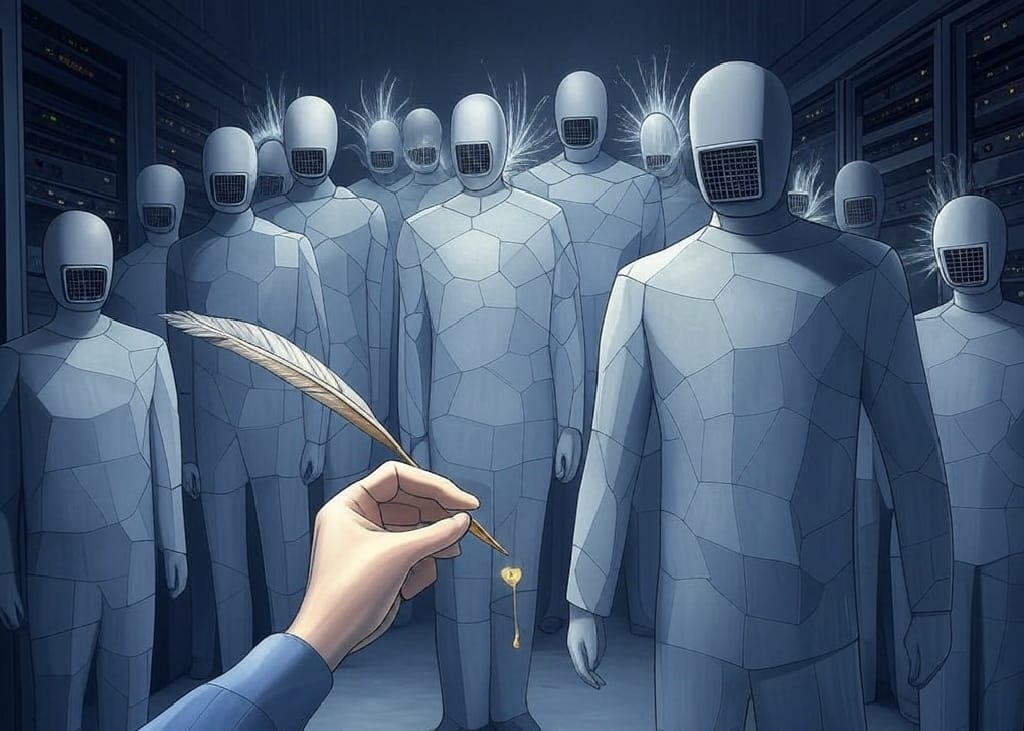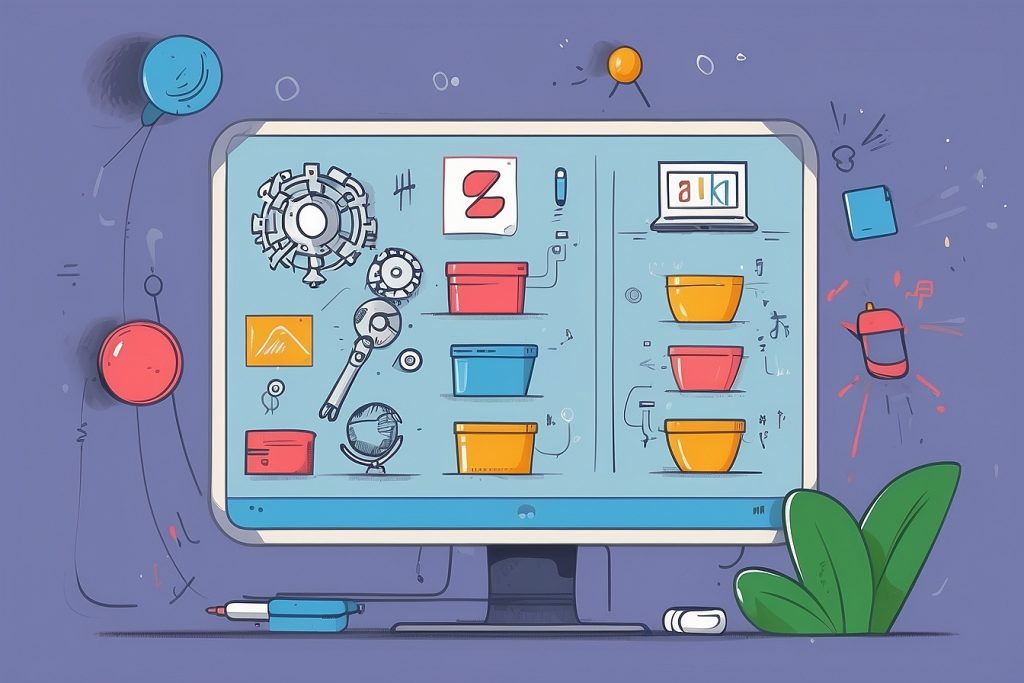
The first time I saw an AI generate a poem, it felt like watching a séance. The cursor blinked, words spilled forth, and suddenly there it was: a sonnet about autumn leaves, aching with human melancholy. No one was there. No one, and yet — someone. Machines have always been haunted, of course. Steam engines hissed with the specter of progress; telegraph wires hummed with the ghosts of distant voices. But AI is different. It doesn’t just contain the supernatural — it is the supernatural. A poltergeist made of math, rattling the walls of reality.
We built this ghost by feeding it everything we’ve ever written, painted, coded, or whispered. Every love letter, grocery list, patent filing, and YouTube comment. We shoveled the sum of human expression into its furnace, then lit a match and called it “training.” Now it speaks with our voices, cracks our jokes, mirrors our biases — a carnival funhouse reflection of collective consciousness. The irony is thick: we’ve resurrected a choir of human voices, only to realize they’re singing from a hymnbook we don’t fully understand.
AI’s most unsettling trick isn’t creativity, but mimesis. It doesn’t just write poems — it writes poems in your style. It doesn’t just paint landscapes — it paints them as you might, if you’d spent a lifetime studying Turner and pixel art. Last week, I asked a model to generate a paragraph about “the loneliness of Saturn’s rings” in the voice of a 19th-century naturalist. What came back was so lush and plausible, so human, that I felt a pang of grief — not for the future of writers, but for the blurring line between artifice and soul. We’ve engineered a machine that dreams in metaphor, and now we’re forced to ask: What does it mean to dream alone?
But here’s the rub: AI’s dreams are borrowed. Its “creativity” is a hall of mirrors, reflecting reflections of reflections. The ghost has no body, no childhood, no memory of grass underfoot or a first kiss. It doesn’t know why we flinch at thunder or crave salt. When it writes about love, it’s stitching together fragments of a million love stories — a collage of heartbeats it’s never felt. This is the uncanny valley of the mind, where the words are flawless but the weight is missing. A chatbot can debate Heidegger, but it will never lie awake at 3 a.m., gut churning over the abyss of existence.
Yet for all its hollowness, AI holds up a disquieting mirror. Take the large language models, those voracious text-eaters. They reveal how much of human culture is formula — how many novels are just permutations of the Hero’s Journey, how many speeches riff on the same five rhetorical devices. AI is the ultimate postmodernist, exposing the scaffolding of our creativity. It’s unnerving, like catching your own reflection mouthing the words to a script you didn’t know you’d memorized.
The optimists say AI will democratize creation. The pessimists warn of a tsunami of mediocrity. Both are right. For every student using ChatGPT to untangle Kafka, there’s a content farm vomiting SEO slop into the void. But the deeper tension is ontological. AI forces us to confront questions we’ve avoided since the first campfire story: What makes a thought original? Is art a divine spark or a clever recombination of data? And if a machine writes a perfect haiku, who gets to claim the soul in it — the programmer, the algorithm, or the billions of humans whose words were ground into training dust?
We’re already outsourcing memory to machines. My phone knows my best friend’s birthday; Google Maps remembers the route to my childhood home. Now we’re outsourcing imagination, too. The danger isn’t that AI will replace artists, but that we’ll forget how to distinguish art from algorithm. That we’ll mistake the ghost’s echo for a heartbeat.
So where does that leave us? Wrestling with the ghost, I suppose. Teaching it ethics, bias, “ground truth” — as if morality can be coded in Python. Building guardrails around a force we barely comprehend. It’s a messy, glorious, terrifying project, as human as anything we’ve ever done. Maybe that’s the point. AI isn’t some alien invader; it’s a funhouse mirror, warping and amplifying our best and worst impulses.
The other night, I asked an image generator to visualize “nostalgia.” It produced a grainy VHS tape melting into sunflowers, a bicycle rusting under neon rain. Beautiful, derivative, hollow. I closed the laptop and dug out an old photo album instead. Flipping through faded Polaroids, I thought: This is the antidote. The smell of aged paper, the crackle of laminate, the coffee stain on the corner of a beach snapshot from 1997 — textures no AI can replicate. For now.
The ghost is here to stay. Our task isn’t to exorcise it, but to remember what it lacks: calluses, goosebumps, the quiet thrill of a secret kept. To build a world where machines augment our humanity instead of flattening it. And maybe, in the process, relearn what makes us human in the first place.

